#General Patrick Cleburne
Text
#OTD in 1861 – The American Civil War began; 150,000 Irishmen would serve with the Union forces, and 40,000 with the Confederacy.
The American Civil War began, a war that would not only pit American against American but also Irish against Irish. An estimated 150,000 Irish fought on the Union side while about 40,000 fought for the confederacy. While the majority fought with the Union, many Irish had a strong antipathy to a northern culture which they perceived as anti-Catholic and Protestant dominated. The most famous Irish…

View On WordPress
#American Civil War#Confederacy#Fighting 69th#General Patrick Cleburne#Irish Brigade#Irish Soldiers#Robert E. Lee#Thomas Meagher#Union
11 notes
·
View notes
Text
THIS DAY IN GAY HISTORY
based on: The White Crane Institute's 'Gay Wisdom', Gay Birthdays, Gay For Today, Famous GLBT, glbt-Gay Encylopedia, Today in Gay History, Wikipedia, and more … November 30


1554 – Sir Philip Sidney, English courtier, soldier, and writer (d.1586); the English courtier and poet was one of the leading lights of Queen Elizabeth's court and a model of Renaissance chivalry. His Apostrophel and Stella is one of the great sonnet sequences in English and was inspired by his love for Penelope Devereaux, even though he later married Frances Walsingham. Lest one confuse Renaissance "love" and "marriage" with the modern versions, it should be pointed out that Penelope Devereaux was 12-years old when Sidney fell in love with her, and that Frances Walsingham was 14 when she was married to the 29-year-old courtier. Marriages were arranged then and not made in heaven, more a real estate transaction than a spiritual love match.
Sidney, himself, was in his teens when the Huguenot writer and diplomat Hubert Languet fell in love with him. Languet was 36 years his senior, lived with him for a time, and, when they parted, wrote passionate letters to him weekly. In his youth, Sidney was strongly attached to two young men, Fulke Greville and Edward Dyer, and wrote love verses to them both, a point not lost on gay John Addington Symonds when he wrote Sidney's biography.
Sidney died in battle at the age of 32. According to the story, while lying wounded he gave his water-bottle to another wounded soldier, saying, "Thy necessity is yet greater than mine". This became possibly the most famous story about Sir Phillip, intended to illustrate his noble character.


1864 – Died: Major General Patrick (Ronayne) Cleburne (b.1828), who was an Irish American soldier, best known for his service in the Confederate States Army during the American Civil War. Born in County Cork, Ireland, Cleburne served in the 41st Regiment of Foot of the British Army after failing to gain entrance into Trinity College of Medicine in 1846. He emigrated to the U.S. three years later. At the beginning of the Civil War, Cleburne sided with the Confederacy. He progressed from being a private soldier in the local militia to a division commander. Cleburne participated in many successful military campaigns, especially the Battle of Stones River and the Battle of Ringgold Gap. His strategic ability gained him the nickname "Stonewall of the West".
According to Randy Shilts ("Conduct Unbecoming"), the Major General might have earned the "Stonewall" appellation for less martial reasons. According to Shilts in his bestselling Conduct Unbecoming the Major General was a 'life-long bachelor' and wrote of the great love of his life:
Cleburne's relationship with his twenty-two year old adjutant, Captain Irving Ashby Buck, drew the notice of the general's colleagues. Cleburne's biographer John Francis Maguire wrote that the general's 'attachment' to Buck 'was a very strong one' and that Buck 'for nearly two years of the war, shared Cleburne's labors during the day and his blankets at night.' Buck himself wrote that the pair were 'close and confidential. I habitually messed with him and shared his tent and often his blankets."
Prior to the campaigning season of 1864, Cleburne became engaged to Susan Tarleton of Mobile, Alabama. Their marriage was never to be, as Cleburne was killed during an ill-conceived assault (which he opposed) on Union fortifications at the Battle of Franklin, just south of Nashville, Tennessee, on November 30, 1864.


Self-portrait
1869 – Konstantin Somov (d.1939) Russian Artist associated with the Mir iskusstva. He was the son of a curator at the Hermitage, and he attended the St Petersburg Academy of Art from 1888 to 1897, studying under the Realist painter Il'ya Repin from 1894. Somov was homosexual, like many of the World of Art members.

Sleeping Nude
In 1897 and again in 18989 he went to Paris and attended the studios of Filippo Colarossi and of Whistler. Neither the Realism of his Russian teachers nor the evanescent quality of Whistler's art was reflected for long in Somov's work. He turned instead for inspiration to the Old Masters in the Hermitage and to works of contemporary English and German artists, which he knew from visits abroad and from the art journals.
Following the Russian Revolution, he emigrated to the United States, but found the country "absolutely alien to his art" and moved to Paris. He was buried at the Sainte-Genevieve-des-Bois Cemetery.


1874 – Winston Churchill, British prime minister and statesman (d.1965). He was Britain's wartime prime minister whose courageous leadership and defiant rhetoric fortified the English during their long struggle against Hitler's Germany. "I have nothing to offer but blood, toil, tears, and sweat," he stated upon becoming prime minister at the beginning of the war. He called Hitler's Reich a "monstrous tyranny, never surpassed in the dark, lamentable catalogue of human crime." Following the war, he coined the term "Iron Curtain" to describe the barrier between areas in Eastern Europe under Soviet control and the free West.
In his wonderfully entertaining and informative biography of W. Somerset Maugham, Ted Morgan tells how Maugham once asked Churchill whether it was true, as the statesman's mother had claimed, that he had had affairs with other young men in his youth.
"Not true!" Churchill replied. "But I once went to bed with a man to see what it was like."
The man turned out to be musical-comedy star, Ivor Novello.
"And what was it like?" asked Maugham.
"Musical" Churchill replied.
Another famous story goes that when Winston Churchill was Prime Minister, he was woken one freezing February morning by a Downing Street aide bearing the shocking news that a male Tory MP had been caught having sex with a naked guardsman in St James’s Park.
Noting that it had been the coldest night of the winter, Churchill is said to have remarked: "Makes you proud to be British."


1900 – On this date, Oscar Wilde, Irish writer, wit and raconteur died (b.1854); Prison, after his conviction for "gross indecency," was unkind to Wilde's health and after he was released on May 19, 1897 he spent his last three years penniless, in self-imposed exile from society and artistic circles. He went under the assumed name of Sebastian Melmoth, after the famously "penetrated" Saint Sebastian and the devilish central character of Wilde's great-uncle Charles Robert Maturin's gothic novel Melmoth the Wanderer.
Nevertheless, Wilde lost no time in returning to his previous pleasures. According to Lord Alfred Douglas, Robbie Ross "dragged [him] back to homosexual practices" during the summer of 1897, which they spent together in Berneval. After his release, he also wrote the famous poem The Ballad of Reading Gaol.
Wilde spent his last years in the Hôtel d'Alsace, now known as L'Hôtel, in Paris, where he was notorious and uninhibited about enjoying the pleasures he had been denied in England. Again according to Douglas, "he was hand in glove with all the little boys on the Boulevard. He never attempted to conceal it." In a letter to Ross, Wilde laments, "Today I bade good-bye, with tears and one kiss, to the beautiful Greek boy. . . he is the nicest boy you ever introduced to me."
Just a month before his death he is quoted as saying, "My wallpaper and I are fighting a duel to the death. One or other of us has got to go." His moods fluctuated; Max Beerbohm relates how, a few days before Wilde's death, their mutual friend Reginald 'Reggie' Turner had found Wilde very depressed after a nightmare.
"I dreamt that I had died, and was supping with the dead!"
"I am sure," Turner replied, "that you must have been the life and soul of the party." Reggie Turner was one of the very few of the old circle who remained with Wilde right to the end, and was at his bedside when he died. On his deathbed he was received into the Roman Catholic church. Wilde died of cerebral meningitis on November 30, 1900.
Wilde was buried in the Cimitiere de Bagneaux outside Paris but was later moved to Père Lachaise in Paris. His tomb in Père Lachaise was designed by sculptor Sir Jacob Epstein, at the request of Robert Ross, who also asked for a small compartment to be made for his own ashes. Ross's ashes were transferred to the tomb in 1950. The numerous spots on it are lipstick traces from admirers.
The modernist angel depicted as a relief on the tomb was originally complete with male genitals. They were broken off as obscene and kept as a paperweight by a succession of Père Lachaise cemetary keepers. Their current whereabouts are unknown. In the summer of 2000, intermedia artist Leon Johnson performed a forty minute ceremony entitled Re-membering Wilde in which a commissioned silver prosthesis was installed to replace the vandalized genitals.
Note: As a general rule, this site does not list persons' death dates - unless their death was something out of the ordinary, a reason for them to be remembered, or because we don't know their date of birth. However, Oscar Wilde desreves special treatment. His name is referenced in this collection of brief biographies far more than any other person. His life, trial, and death had a world-wide effect on gay history.


1955 – Kevin Conroy was an American actor and voice actor (d.2022). He is best known for his voice role as the DC Comics character Batman on the 1990s Warner Bros. television show Batman: The Animated Series, as well as various other TV series and feature films in the DC animated universe.
Due to the popularity of his performance as Batman, Conroy went on to voice the character for multiple films under the DC Universe Animated Original Movies banner, the critically acclaimed Batman: Arkham video games, and in fall 2019 he will play a live action Bruce Wayne in the Arrowverse adaptation of Crisis on Infinite Earths.
Conroy was born in Westbury, New York. Conroy was born into an Irish Catholic family which moved to Westport, Connecticut when he was about 11 years old. He moved to New York City in 1973 when he earned a full scholarship to attend Juilliard's drama division, studying under actor John Houseman. While there, he roomed with Robin Williams, who was in the same group as both Conroy and Kelsey Grammer.
After graduating from Juilliard in 1978, he toured with Houseman's acting group The Acting Company, and the following year he went on the national tour of Ira Levin's Deathtrap.
Filmreference.com listed Conroy as having been married, and having a child, though an interview with The New York Times in 2016 stated that he was single. He also said that he was gay.
In the 2016 interview with The New York Times promoting the animated adaptation of The Killing Joke, Conroy revealed that he was gay. As part of DC Comics' 2022 Pride anthology, Conroy wrote "Finding Batman", a story that recounted his life and experiences as a gay man. It received critical acclaim upon release. He was married to Vaughn C. Williams at the time of his death.
Conroy made an effort to conceal his homosexuality throughout most of his career. He spoke in "Finding Batman" about the discrimination he faced once potential collaborators and employers found out about his homosexuality. Conroy has said that on multiple occasions he had been removed from consideration for acting jobs due to his sexual orientation.

1995 – The first US. government-sponsored advertising targeting gay men debuts on the eve of World AIDS Day when the Centers for Disease Control and Prevention releases a public service television announcement cautioning men to have “smart sex.”

Today's Gay Wisdom:
The wit of Oscar Wilde
A cynic is a man who knows the price of everything but the value of nothing.
Moderation is a fatal thing. Nothing succeeds like excess.
There are only two kinds of people who are really fascinating: people who know absolutely everything, and people who know absolutely nothing.
To lose one parent, Mr Worthing, may be regarded as a misfortune; to lose both looks like carelessness.
We are all in the gutter, but some of us are looking at the stars.
An idea that is not dangerous is unworthy of being called an idea at all.
Education is an admirable thing, but it is well to remember from time to time that nothing that is worth knowing can be taught.
One should absorb the colour of life, but one should never remember its details. Details are always vulgar.
The truth is rarely pure and never simple.
Children begin by loving their parents; after a time they judge them; rarely, if ever, do they forgive them.
Experience is simply the name we give our mistakes.
Illusion is the first of all pleasures.
All bad poetry springs from genuine feeling.
It is better to be beautiful than to be good. But... it is better to be good than to be ugly.
There is nothing so difficult to marry as a large nose.
Keep love in your heart. A life without it is like a sunless garden when the flowers are dead.
Laughter is not at all a bad beginning for a friendship, and it is far the best ending for one.
There is only one thing in life worse than being talked about, and that is not being talked about.
Now that the House of Commons is trying to become useful, it does a great deal of harm.
The difference between literature and journalism is that journalism is unreadable and literature is not read.
Life imitates art far more than art imitates Life.
It's not whether you win or lose, it's how you place the blame.
The old believe everything, the middle-aged suspect everything, the young know everything.
America had often been discovered before Columbus, but it had always been hushed up.
There is no sin except stupidity.
It is only the modern that ever becomes old-fashioned.
A cigarette is the perfect type of a perfect pleasure. It is exquisite, and it leaves one unsatisfied. What more can one want?
Only the shallow know themselves.
Every saint has a past and every sinner has a future.
He hadn't a single redeeming vice.
A pessimist is one who, when he has a choice of two evils, chooses both.
Whenever people agree with me I always feel I must be wrong.


17 notes
·
View notes
Text
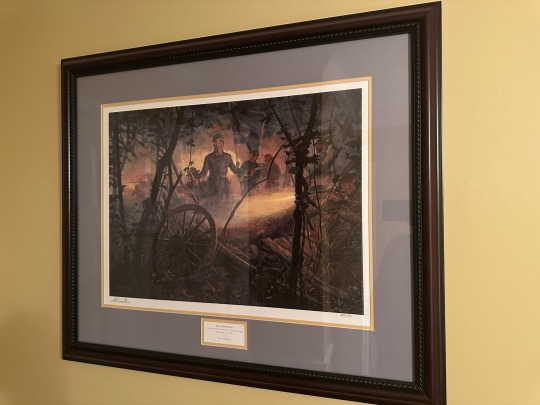
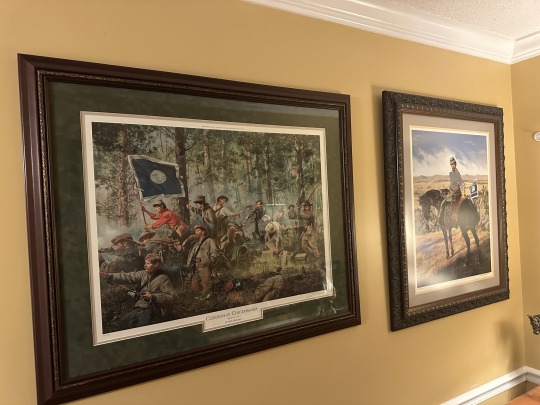
Patrick Cleburne. The most underrated general of the South. Had his idea of slaves fighting in exchange for emancipation, or if he had been in charge instead of Hood or Johnston who had already given up, we’d probably be an independent nation.
4 notes
·
View notes
Photo

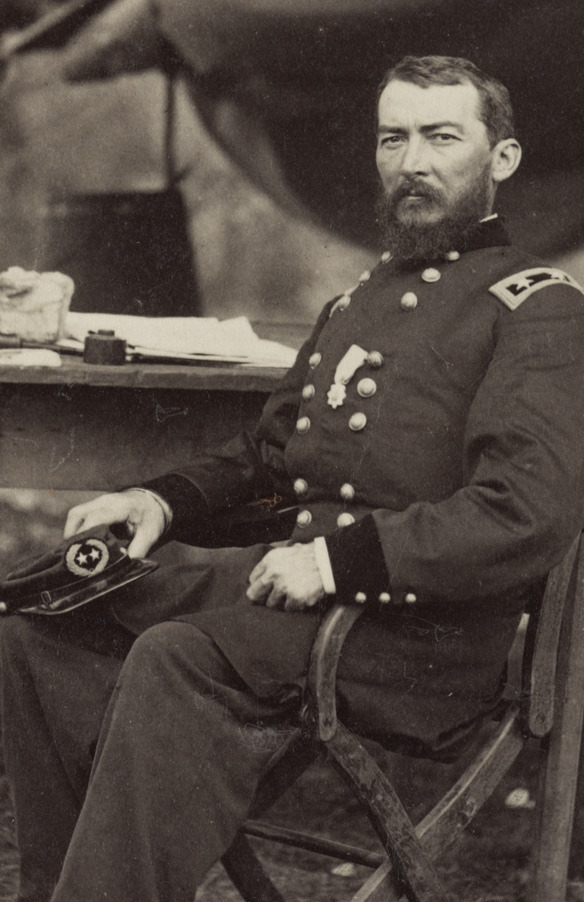

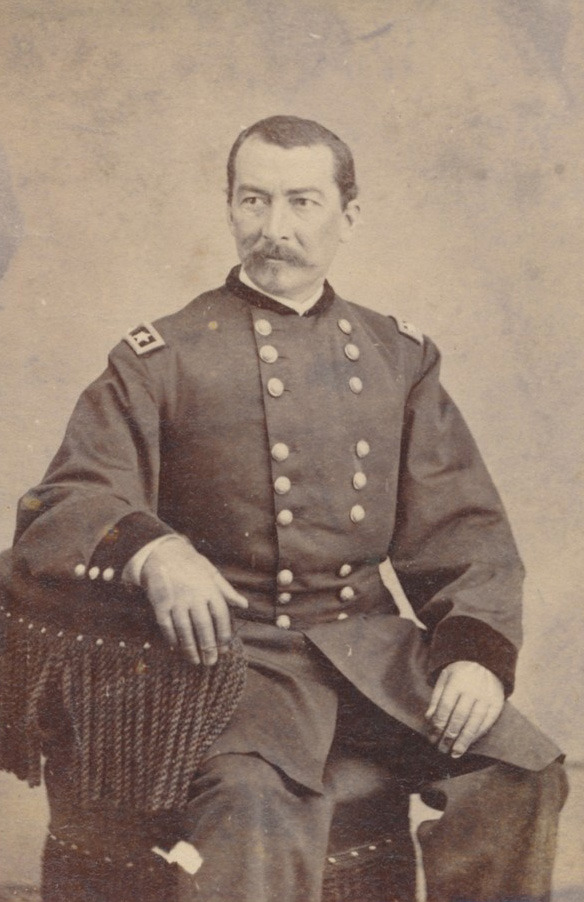
Philip Henry Sheridan, born March 6th, 1831, was once described by Abraham Lincoln as “A brown, chunky little chap, with a long body, short legs, not enough neck to hang him, and such long arms that if his ankles itch he can scratch them without stooping.” Still, “Little Phil” rose to tremendous power and fame before his untimely death of a heart attack at age 57.
He is most famous for his destruction of the Shenandoah Valley in 1864, called “The Burning” by its residents. He was also the subject of an extremely popular poem entitled “Sheridan’s Ride”, in which he (and his famous horse, Rienzi) save the day by arriving just in time for the Battle of Cedar Creek.
Like Patrick Cleburne, Sheridan rose very quickly in rank. In the fall of 1861, Sheridan was a staff officer for Maj. Gen. Henry Halleck. He later became quartermaster general in the Army of Southwest Missouri. With the help of influential friends he was appointed Colonel of the 2nd Michigan Cavalry in May, 1862. His first battle, Booneville, MS, impressed Brig. Gen. William S. Rosecrans so much that he himself was promoted to Brigadier General. After Stones River he was promoted to Major General.
Sheridan’s men were part of the forces which captured Missionary Ridge (near Chattanooga) in 1863. When Ulysses S. Grant was promoted to General-in-Chief of the Union armies, he made Sheridan the commander of the Army of the Potomac’s Cavalry Corps. This moved him from the Western Theater to the Eastern Theater of operations. At first, Sheridan’s Corps was used for reconnaissance. His men were sent on a strategic raiding mission toward Richmond in May 1864. Then he fought with mixed success in Grant’s 1864 Overland Campaign.
During the Civil War, Virginia’s Shenandoah Valley was a vital resource to the Confederacy. Not only did it serve as the Confederate “breadbasket”, it was an important transportation route. The region had witnessed two large-scale campaigns already when Gen. Ulysses S. Grant decided to visit the Valley once again in 1864. He sent Philip Sheridan on a mission to make the Shenandoah Valley a “barren waste”.
In September, Sheridan defeated Jubal Early’s smaller force at Third Winchester, and again at Fisher’s Hill. Then he began “The Burning” – destroying barns, mills, railroads, factories – destroying resources for which the Confederacy had a dire need. He made over 400 square miles of the Valley uninhabitable. The Burning” foreshadowed William Tecumseh Sherman’s “March to the Sea”: another campaign to deny resources to the Confederacy as well as bring the war home to its civilians.
In October, however, Jubal Early caught Sheridan off guard. Early launched a surprise attack at Cedar Creek on the 19th. Sheridan, however, was ten miles away in Winchester, Virginia. Upon hearing the sound of artillery fire, Sheridan raced to rejoin his forces. He arrived just in time to rally his troops. Early’s men, however, were suffering from hunger and began to loot the abandoned Union camps. The actions of Sheridan (and Maj. Gen. Horatio Wright) stopped the Union retreat and dealt a severe blow to Early’s army.
For his actions at Cedar Creek, Sheridan was promoted to Major General in the regular army. He also received a letter of gratitude from President Abraham Lincoln. The general took great pleasure in Thomas Buchanan Read’s poem, “Sheridan’s Ride” – so much so that he renamed his horse “Winchester”. The Union victories in the Shenandoah Valley came just in time for Abraham Lincoln and helped the Republicans defeat Democratic candidate George B. McClellan in the election of 1864.
During the spring of 1865, Sheridan pursued Lee’s army with dogged determination. He trapped Early’s army in March. In April, Gen. Lee was forced to evacuate Petersburg when Sheridan cut off his lines of support at Five Forks. And, at Sayler’s Creek, he captured almost one quarter of Lee’s army. Finally at Appomattox, Lee was forced to surrender the Army of Northern Virginia when Sheridan’s forces blocked Lee’s escape route.
At war’s end, Phil Sheridan was a hero to many Northerners. Gen. Grant held him in the highest esteem. Still, Sheridan was not without his faults. He had pushed Grant’s orders to the limit. He also removed Gettysburg hero Gouverneur Warren from command. It was later ruled that Warren’s removal was unwarranted and unjustified.
During Reconstruction, Sheridan was appointed to be the military governor of Texas and Louisiana (the Fifth Military District). Because of the severity of his administration there, President Andrew Johnson declared that Sheridan was a tyrant and had him removed. In 1867, Ulysses S. Grant charged Sheridan with pacifying the Great Plains, where warfare with Native Americans was wreaking havoc. In an effort to force the Plains people onto reservations, Sheridan used the same tactics he used in the Shenandoah Valley: he attacked several tribes in their winter quarters, and he promoted the widespread slaughter of American bison, their primary source of food.
In 1871, the general oversaw military relief efforts during the Great Chicago Fire. He became the Commanding General of the United States Army on November 1, 1883, and on June 1, 1888, he was promoted to General of the Army of the United States – the same rank achieved by Ulysses S. Grant and William Tecumseh Sherman.
Sheridan is also largely responsible for the establishment of Yellowstone National Park – saving it from being sold to developers.
On August 5th, 1888, Sheridan died after a series of massive heart attacks. He was buried at Arlington National Cemetery.
#philip sheridan#philip h sheridan#american civil war#history#i discovered in my reading on thing with the civil war...that i like to read about loud assholes lol#and sheridan isssss for sure one of them#but hey...i can join him in the 'don't like gov. warren club'#that's a whole other topic#but i will also say! that sheridan has a lot of good photos#and i always forget that when he went east he had a beard for a bit lol
12 notes
·
View notes
Text
Before getting to Franklin-Nashville, a brief note on the lie of 'Black Confederates':
The very existence of the Cleburne Memorial gives the lie to the notion that these people ever existed in any notable sense. They did, very briefly, at the very end of the war gain an official recognition in an event that will be covered for the reality that it actually did happen and it shows how much of a lie the entire narrative is further. In this case General Patrick Cleburne, one of the few competent generals the rebel army had in the West decided to ask the inconvenient question of if the Yankees could raise a third of the South's population under arms, perhaps they'd best recognize reality, arm them themselves, and win independence even if slavery died in that process.
For this he remained a division commander until his death at the Battle of Franklin and the firestorm was full of all the reasons why this was not only not true, but why the Black population of the so-called Confederacy for understandable reasons refused to accept the future Mr. Davis offered them.
#lightdancer comments on history#black history month#us history#military history#war of the rebellion#the cleburne memorial#black confederates are a hoax#there were a few units in formation in 1865 that never saw battle#and the very existence of those units was a confession of how badly the rebellion unraveled
0 notes
Text
This beautiful historical site Is located In Franklin Tennessee at the Eastern Flank Battlefield park.
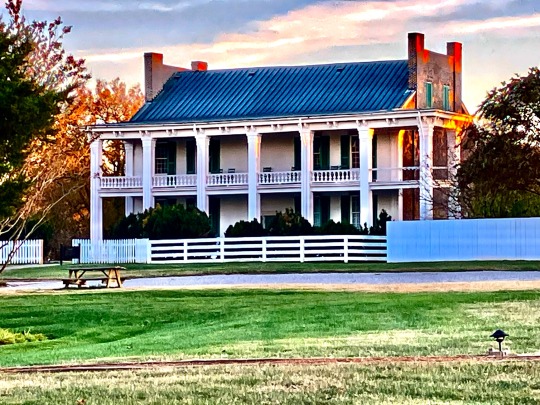
The Carnton was built by the mayor Randal McGavock. This plantation stood on the same grounds at one of the bloodiest battles here In Franklin. This battle left soldiers wounded,most were killed, some captured or even counted as missing. This home also served as the largest field hospital in the area, for hundreds of dying Confederate Soldiers.
The day that turns the McGavocks livelihood upside down.
November 30th, 1864
Not only did the home change but also the McGavock’s as they found themselves in the middle of what was said to be worst dramatic events in Civil War. This exact night the Plantation was now a Confederate Field Hospital, throughout the night following the five hour battle the McGavocks and two children begin assisting to the wounded and helping surgeons. I couldn’t imagine only being nine and seven and having to not only help but see all the blood, guts and trauma.
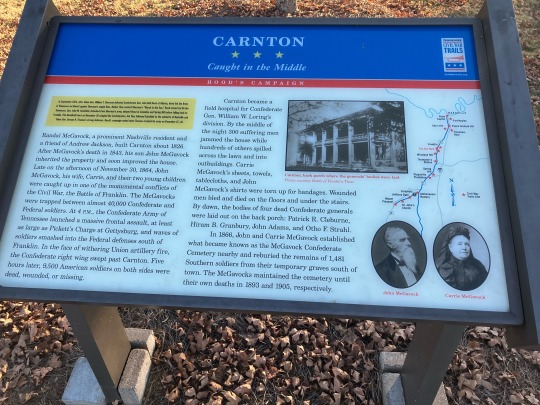
More than 1,750 Confederates lost their lives. They attended to a total of 300 soldiers devastating that 150 didn’t make it through the night. Hundreds more were literally scattered around the property.
If you didn’t know this but the bodies of four different Confederate General’s , Patrick Cleburne, John Adams, Otho F. Strahl and Hiram B. Granbury we’re brought to the rear porch of Carnton and laid there a few hours before being taken to their final resting place. As I mentioned 1,750 Confederate soldiers were buried on the battlefield, the moment really hit me as I was walking down the cemetery and seeing the wooden headboards inscribed with soldier’s name, company and their regiment.
After the battle Franklin was left with the horrible task of burying over 2,500 soldiers most being Confederate. I found it honorable that all of the Confederate soldiers were buried in order by states and close to where they had fallen. The McGavock’s didn’t stop being genuine and offering to help.
The family reserved two acres of land that also adjoins his own family cemetery. Him and other citizens raised money together to have the bodies disintegrated and reburied, this happened in spring of 1866.
It’s been said that the McGavock’s did a wonderful job at keeping up the cemetery until their deaths. It was listed on the National Register of Historic Places in 1977.
Today the McGavock’s cemetery and the Confederate Cemetery is a ever lasting memorial honoring those who have fallen at the Battle Of Franklin. If you ever get the chance I highly recommend you go, learn and experience it for yourself.
Not only was the plantation helpful to The Battlefield but also to Lot’z House and Carter House.(I’ll go into detail when I take the actual tours for each location.
Reasons why I enjoyed visiting.
- [ ] If you don’t know about the Battle of Franklin or why this house is listed as National Historic Site it’s okay because you’ll learn as you walk through the park.
- [ ] That the Battlefield and Cemetery is free no admission ( again please be respectful.) While entering the cemetery there is a donation box.
- [ ] How incredibly beautiful it was walking along the trail and reading the infographics.( I didn’t even get to them all there’s so many!)
- [ ] How peaceful it was
- [ ] Walking through the cemetery is truly when everything hit me after doing so much research on this when I first moved here.
- [ ] Evening stroll, history lesson and great place for a sunset.
- [ ] Thought it was cool how you can see the Cartnon Plantation house from the fence.
- [ ] What once was part of a battlefield is now a great place dogs to get rid of energy and there’s a trail that leads to a dog park.
HOURS:Monday through Saturday - 9:00 am to 5:00 pm. Sunday - 11:00 am to 5:00 pm side note it is closed on holiday’s such as New Year’s Day, Easter,Thanksgiving,Christmas Eve and Christmas Day.
Things to know: As the battlefield and cemetery is free of charge. There is an admission fee to go on the walking tours. (Different options so different prices.)
There’s a bunch of parking but is nice to just walk around each destination. Dogs are welcome just on leash when walking but there is a dog park and I did see a few just running around part of the battlefield. (Just keep an eye on them cause of wildlife. I saw a family of deer while I was there.)
Pictures from battlefield and both cemeteries.


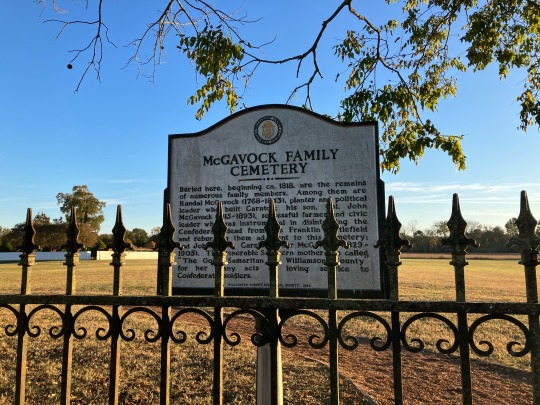


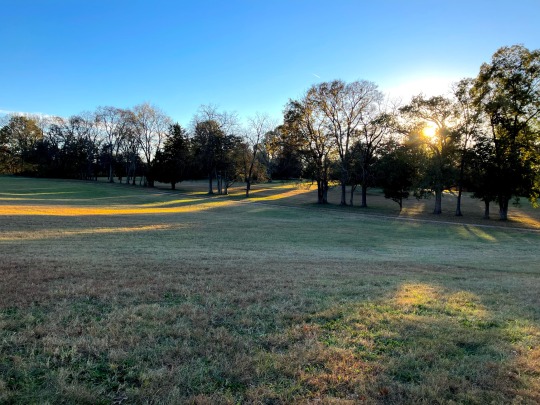
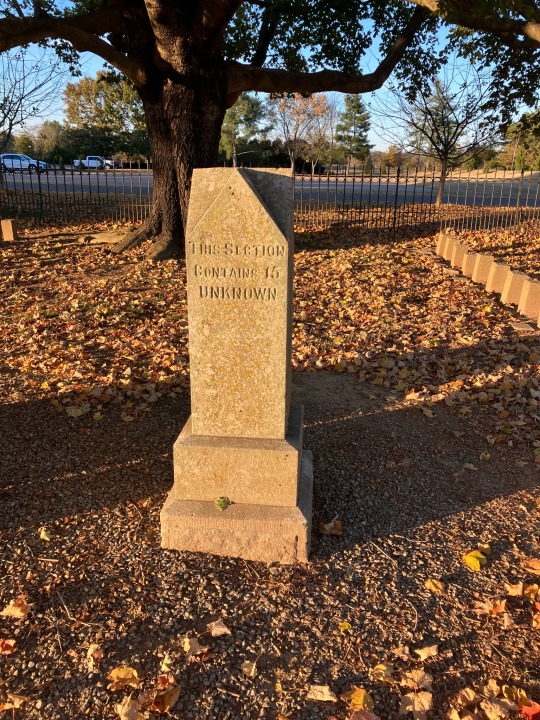

#places to visit#adventureawaits#places to explore#planyournextadventurewithme#historyplacestovisit#historyparks#Carntonplantaion#onlyintennessee#historicalplacetovisit
0 notes
Text
"Civil War Immigrant Leaders" Now Available for Purchase
This newest book in my series, “Civil War Personalities: 50 At a Time,” is now available at amazon.com:
Of the tens of thousands of immigrants who played key roles for both the Union and Confederacy, this book focuses on a representative 50. Here are short descriptions of those on the cover, from top left:
Patrick Cleburne, Ireland, Confederate General, “Stonewall of the West.”
Thomas Meagher,…

View On WordPress
0 notes
Text
Happy St. Patrick's Day!
Happy St. Patrick’s Day!
In honor of the special holiday, I’d like to share this article. Erin go bragh!

IRISH REGIMENTS OF THE WAR
Memphis, Tennessee was home to the 2nd largest Irish population in the South, and on the outbreak of War, many rushed to the state colors. Colonel Knox Walker was in command of 2nd TN Infantry Regt, a.k.a. “Irish Regiment”. Early uniforms made by the ladies of the city consisted of…
View On WordPress
#Atlanta#Chickamauga#Confederate#Federals#Franklin#General Braxton Bragg#Georgia#infantry#Irish#Irish Regiment#Kentucky#Major-General Patrick Cleburne#Memphis#Mississippi#Missouri#Murfreesboro#muskets#Nashville#Shiloh#South#Tennessee
1 note
·
View note
Text
Sewanee's Fighting Bishop
Sewanee’s Fighting Bishop
The Confederate Army of Tennessee had a curious mix of generals. One was a former US Vice-President (John C. Breckinridge), another was a slave trader (Nathan Bedford Forrest), and still another was a former British soldier (Patrick Cleburne). It seems odd that a man of the cloth would be a warrior, but there was one who commanded a Confederate corps: Leonidas K. Polk, formerly the Episcopal…

View On WordPress
4 notes
·
View notes
Text
CIVIL WAR | BIOGRAPHY Philip Sheridan
CIVIL WAR | BIOGRAPHY
Philip Sheridan
Philip Henry Sheridan was once depicted by Abraham Lincoln as "An earthy colored, thick little chap, with a long body, short legs, insufficient neck to hang him, and such long arms that if his lower legs tingle he can scratch them without stooping." Still, "Little Phil" rose to enormous force and acclaim before his inconvenient demise of a respiratory failure at age 57.
He is generally acclaimed for his annihilation of the Shenandoah Valley in 1864, called "The Burning" by its inhabitants. He was additionally the subject of an incredibly well known sonnet named "Sheridan's Ride", where he (and his acclaimed horse, Rienzi) make all the difference by showing up without a moment to spare for the Battle of Cedar Creek.
Like Patrick Cleburne, Sheridan rose rapidly in position. In the fall of 1861, Sheridan was a staff official for Maj. Gen. Henry Halleck. He later became officer general in the Army of Southwest Missouri. With the assistance of persuasive companions he was selected Colonel of the second Michigan Cavalry in May, 1862. His first fight, Booneville, MS, intrigued Brig. Gen. William S. Rosecrans such a lot of that he, when all is said and done, was elevated to Brigadier General. After Stones River he was elevated to Major General.
Sheridan's men were essential for the powers which caught Missionary Ridge (close to Chattanooga) in 1863. At the point when Ulysses S. Award was elevated to General-in-Chief of the Union armed forces, he made Sheridan the authority of the Army of the Potomac's Cavalry Corps. This moved him from the Western Theater toward the Eastern Theater of activities. From the start, Sheridan's Corps was utilized for observation. His men were sent on a key striking mission toward Richmond in May 1864. At that point he battled with blended achievement in Grant's 1864 Overland Campaign.
During the Civil War, Virginia's Shenandoah Valley was an essential asset to the Confederacy. In addition to the fact that it served as the Confederate "breadbasket", it was a significant transportation course. The locale had seen two enormous scope crusades as of now when Gen. Ulysses S. Award chose to visit the Valley indeed in 1864. He sent Philip Sheridan set for make the Shenandoah Valley a "desolate waste".
In September, Sheridan crushed Jubal Early's more modest power at Third Winchester, and again at Fisher's Hill. At that point he started "The Burning" – annihilating stables, plants, rail lines, production lines – obliterating assets for which the Confederacy had a desperate need. He made more than 400 square miles of the Valley dreadful. "The Burning" foreshadowed William Tecumseh Sherman's "Walk to the Sea": another mission to deny assets to the Confederacy just as bring the conflict home to its regular citizens.
In October, be that as it may, Jubal Early found Sheridan napping. Early dispatched an unexpected assault at Cedar Creek on the nineteenth. Sheridan, nonetheless, was ten miles away in Winchester, Virginia. After hearing the sound of mounted guns shoot, Sheridan hustled to rejoin his powers. He showed up without a moment to spare to get everyone excited. Early's men, nonetheless, were experiencing appetite and started to plunder the unwanted Union camps. The activities of Sheridan (and Maj. Gen. Horatio Wright) halted the Union retreat and managed a serious hit to Early's military.
For his activities at Cedar Creek, Sheridan was elevated to Major General in the customary armed force. He likewise got a letter of appreciation from President Abraham Lincoln. The general enjoyed extraordinary Thomas Buchanan Read's sonnet, "Sheridan's Ride" – to such an extent that he renamed his pony "Winchester". The Union triumphs in the Shenandoah Valley came in the nick of time for Abraham Lincoln and aided the Republicans rout Democratic applicant George B. McClellan in the appointment of 1864.
Throughout the spring of 1865, Sheridan sought after Lee's military with hounded assurance. He caught Early's military in March. In April, Gen. Lee had to empty Petersburg when Sheridan remove his lines of help at Five Forks. Furthermore, at Sayler's Creek, he caught very nearly one fourth of Lee's military. At long last at Appomattox, Lee had to give up the Army of Northern Virginia when Sheridan's powers obstructed Lee's break course.
At war's end, Phil Sheridan was a legend to numerous Northerners. Gen. Award held him in the most elevated regard. In any case, Sheridan was not without his issues. He had stretched Grant's requests to the edge. He likewise eliminated Gettysburg legend Gouverneur Warren from order. It was subsequently decided that Warren's evacuation was ridiculous and inappropriate.
During Reconstruction, Sheridan was named to be the military legislative head of Texas and Louisiana (the Fifth Military District). Due to the seriousness of his organization there, President Andrew Johnson pronounced that Sheridan was a dictator and had him eliminated.
In 1867, Ulysses S. Award accused Sheridan of mollifying the Great Plains, where fighting with Native Americans was unleashing devastation. With an end goal to constrain the Plains individuals onto reservations, Sheridan utilized similar strategies he utilized in the Shenandoah Valley: he assaulted a few clans in their colder time of year quarters, and he advanced the far and wide butcher of American buffalo, their essential wellspring of food.
In 1871, the overall regulated military aid ventures during the Great Chicago Fire. He turned into the Commanding General of the United States Army on November 1, 1883, and on June 1, 1888, he was elevated to General of the Army of the United States – a similar position accomplished by Ulysses S. Award and William Tecumseh Sherman.
Sheridan is additionally generally answerable for the foundation of Yellowstone National Park – saving it from being offered to engineers.
In August 1888, Sheridan passed on after a progression of monstrous coronary failures. He was covered at Arlington National Cemetery.
Read more about Philip Sheridan
1 note
·
View note
Text
#OTD in 1861 – The 10th Tennessee Infantry Regiment enters Confederate service in the American Civil War.
Company D was known as the ‘Rebel Sons of Erin’ because so many of them were Irish. Indeed, the roster of Company D reads like any small town in a 19th century Irish village (every surname was Irish).
While the Fighting 69th on the Union side is the most famous “Irish Brigade,” it is estimated that at least 30,000 Irish fought on the Confederate side. Much of the enlistment was due to the…

View On WordPress
#America#American Civil War#Confederate#General Patrick Cleburne#Ireland#Patrick Cleburne Painting by Richard R. Miller#Tenth Tennessee Infantry Regiment
28 notes
·
View notes
Photo

1863 09 20 Chickamauga, General Cleburne - Don Troiani
"In a cedar grove, the men of General Patrick R. Cleburne's 2nd Tennessee hold the line in a bitter day long fighting against desperate odds. With ammunition running low, the General and his staff take matters into their own hands by personally rushing cartridges forward to their desperate men."
51 notes
·
View notes
Photo

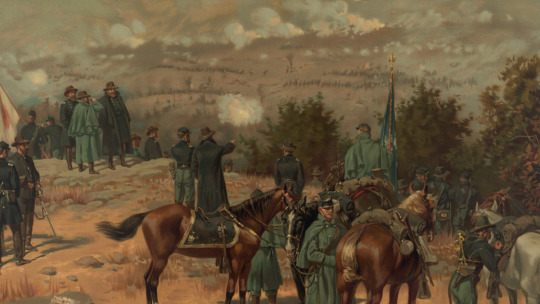

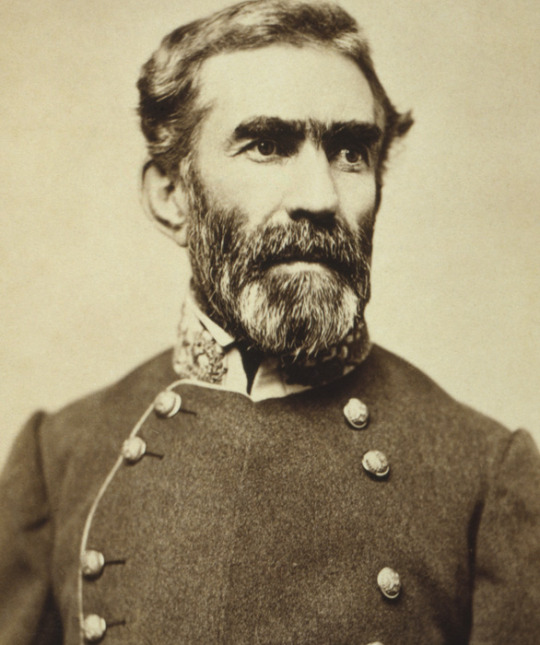

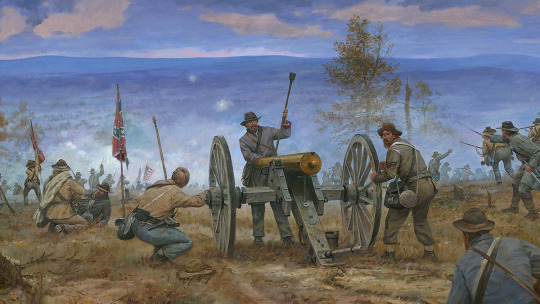
The Battles for Chattanooga (November 23 to November 25, 1863) were a series of battles in which Union forces routed Confederate troops in Tennessee at the battles of Lookout Mountain and Missionary Ridge during the American Civil War (1861-65). The victories forced the Confederates back into Georgia, ending the siege of the vital railroad junction of Chattanooga and paving the way for Union General William Tecumseh Sherman’s Atlanta campaign and march to Savannah, Georgia, in 1864.
After the Confederate victory at Chickamauga in northwest Georgia in September 1863, the Union army retreated to the vital railroad junction of Chattanooga, Tennessee. Confederate General Braxton Bragg (1817-76) quickly laid siege to the city, cutting off access to Union supplies. In response, President Abraham Lincoln (1809-65) ordered Major General Ulysses S. Grant (1822-85) to Chattanooga. Grant, who arrived in October, soon refortified the city, opening up a desperately needed supply line, and began maneuvers to lift the siege.
The Battle of Chattanooga was launched on November 23 when Grant sent General George H. Thomas (1816-70), who was dubbed the Rock of Chickamauga for standing his ground against the Confederates at the Battle of Chickamauga, to probe the center of the Confederate line. This simple plan turned into a complete victory when the Yankees captured Orchard Knob and the Rebels retreated higher up Missionary Ridge. On November 24, the Yankees under Major General Joseph Hooker (1814-79) captured Lookout Mountain on the extreme right of the Union lines. The Battle of Lookout Mountain, also known as the Battle Above the Clouds, set the stage for the Battle of Missionary Ridge.
The attack took place in three parts. On the Union left, General William Tecumseh Sherman (1820-91) attacked troops under Patrick Cleburne (1828-64) at Tunnel Hill, an extension of Missionary Ridge. In difficult fighting, Cleburne managed to hold the hill. On the other end of the Union lines, Hooker was advancing slowly from Lookout Mountain, and his force had little impact on the battle. It was at the center that the Union achieved its greatest success. The soldiers on both sides received confusing orders. Some Union troops thought they were only supposed to take the rifle pits at the base of the ridge, while others understood that they were to advance to the top. Some of the Confederates heard that they were to hold the pits, while others thought they were to retreat to the top of Missionary Ridge. Furthermore, poor placement of Confederate trenches on the top of the ridge made it difficult to fire at the advancing Union troops without hitting their own men, who were retreating from the rifle pits.
The attack on the Confederate center turned into a major Union victory. After the center collapsed, the Confederate troops retreated on November 26 and Bragg pulled his troops away from Chattanooga. He resigned shortly thereafter, having lost the confidence of his army. (x)
#american civil war#us civil war#chattanooga#ulysses s grant#braxton bragg#acw#history#if you ever get to chance to go to lookout moutanin#it's such an amazing spot and really just gives you those views#and you can also go to orchard knob where grant thomas a lot of generals watched the army of the cumberland crawling up missionary ridge#really really cool stuff
39 notes
·
View notes
Text
CARL'S BLOG: CLEBURNE COUNTY AND ITS PEOPLE, VOLUME 1
CARL’S BLOG: CLEBURNE COUNTY AND ITS PEOPLE, VOLUME 1
7-14-21, General Patrick Cleburne’s Proposal in its Entirety to General Edward L. Thomas: Part 4
On March 18, 1865, General Edward L. Thomas approved and forwarded this proposal to the Confederate Congress.
“Moved by the exigency in which our country is now placed, we take the liberty of laying before you, unofficially, our views on the present situation…. We have now been fighting for nearly…
View On WordPress
0 notes
Text
Main Street Monday: Helena-West Helena Cherry Street
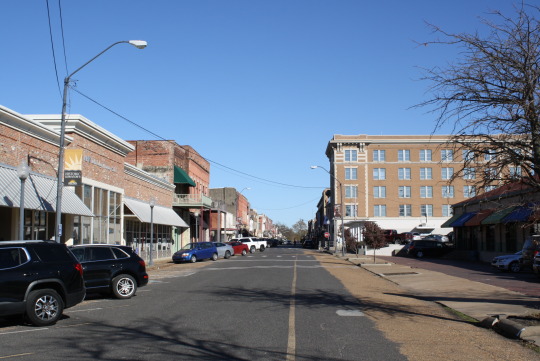
Helena-West Helena is located along the Mississippi River in Phillips county, Arkansas and in 2010 its population was a little over twelve thousand. Helena was incorporated in 1833 and prospered as a river port, while West Helena, a railroad town, was incorporated in 1917. The two cities merged on January 1, 2006 but retained both names. Thus Helena-West Helena was born.
Sylvanus Phillips first came to this region of Arkansas about 1797 when it was under Spanish control and moved to the present site of Helena around 1815. On May 1, 1820, the territorial legislature created a new county named in honor of Sylvanus Philips from Arkansas county. In 1833 the town of Helena was incorporated and named after his daughter Helena Phillips who had died in 1831 at the age of fifteen. This new town rested on the southern edge of Crowley’s Ridge and was bordered on the east by the Mississippi River. Because of its location the town prospered quickly and by 1860 had a population over 1,500.
Helena and Phillips county played a major role during the American Civil War. The community boasted of seven Confederate generals including the famous Patrick Cleburne. Hundreds of men volunteered for service with the South serving at major battles on both sides of the Mississippi River. On July 12, 1862 the Union Army of the Southwest marched into Helena though. Helena would be occupied by the Federal army until 1866 and soon became a gathering point for families loyal to the United States. As Helena served as a recruitment site for the South, it also served that same purpose for the North. Hundreds of men volunteered for Union service in regiments like the 1st Arkansas Infantry of African Descent and the Second Arkansas Cavalry (U.S.). The fourth largest battle in Arkansas was also fought here on July 4, 1863 when Confederate forces under General Holmes attacked the city but failed to take it. Helena would remain occupied until 1866.
During Reconstruction Helena elected a number of African Americans to public office including William Henry Grey and James T. White. Southland College was established in 1864 near Helena by Quaker missionaries as an orphanage and school. It would become the first institution of higher education for African Americans west of the Mississippi River. The school survived until the mid 1920s when it was forced to close because of financial problems. Centennial Baptist Church was also established in Helena by Elias Camp Morris who would become head of the National Baptist Convention.
By the turn of the century sharecropping and segregation had both come into existence in Helena and Phillips county. Many of the gains that had been achieved were lost, but economically the city continued. Agriculture and the timber industry remained important.
Several business leaders realized the need to develop westward as railroads grew in popularity. City leaders purchased land and laid out a new city. This new community would be connected by a trolley system that ran through the bluffs of Crowley’s Ridge. On May 23, 1917, the new city officially incorporated as West Helena.
The twin cities experienced continued growth until the 1960s, when farm mechanization and the decline of the timber industry began to take their tole. Population began to decline as residents moved to bigger cities. Consolidation became a talked about subject as both cities struggled with income. After several lawsuits the citizens voted to merge. On January 1, 2006 the new city of Helena-West Helena came into existence.
Helena-West Helena has much to offer visitors and residents. Phillips Community College of the University of Arkansas was opened in Helena in 1966 and has an enrollment of over two thousand students. The Helena Museum of Phillips County is known nationwide for its exhibits and history. Helena-West Helena is also home to the famous King Biscuit Blues Festival that attracts thousands of visitors every year to the port city. In 1990 the Delta Cultural Center was opened to tell the story of the delta and has expanded to a number of properties over the last thirty years. In addition there are a number of well maintained parks and historic homes that attract visitors. Although the city has experienced the ups and downs like all river and delta towns, Helena-West Helena continues to thrive for excellence and the future is bright.
0 notes